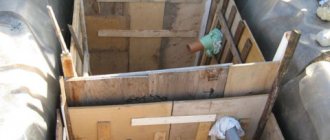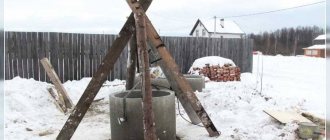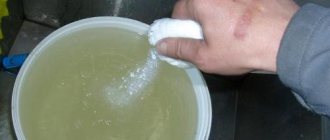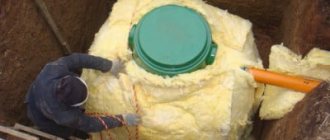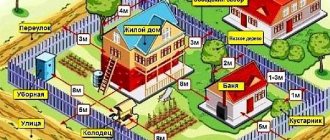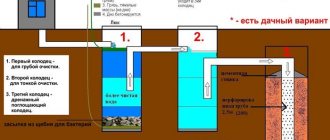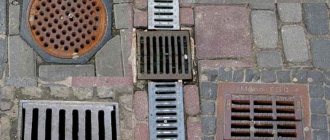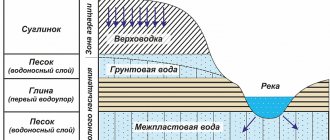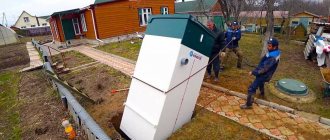On our site there is a pit measuring 6 x 6 m and 1 m deep. Apparently, the previous owners wanted to build something on this site, but never got around to it. We are not planning construction, so we don’t need a foundation pit. Is it possible to put cut trees and shrubs in it and then simply fill it with soil? And what else can be done with this hole?
Natalya Egorova, Zelenograd
Article on the topic Field for creativity. What decorations will add personality to the garden?
Rarely do any summer residents get a completely ideal plot of land. For some it is too dry, for others it is too damp, for others it is too shady or windy. Well, the author of the letter was unlucky with a huge hole. But why no luck? If you approach the matter thoughtfully and creatively, such a disadvantage is not so difficult to turn into an advantage. Or even make it a highlight that all the neighbors and guests of your dacha will look at.
Unfortunately, no details about the exact location, relief, soil and water conditions, features of development and the style of decorative design of the site are presented in the letter. It is only known that it came from the city of Zelenograd, Moscow region. Therefore, I will try to suggest only the most general options for action. I hope that they will be of interest to other summer residents.
Where to begin
First of all, two questions need to be resolved:
- By what principles is it determined that the site will have to be filled in in any case?
- When to backfill.
The answer to the first question.
- The selected area is located in a lowland . During the rainy season and melting snow, it is constantly flooded. High groundwater level.
- There are not only depressions and lowlands on the territory, but also heights that interfere with landscaping.
- If part of the site is swampy and does not dry out even in the summer heat.
- If the road passing through the village is higher . The same applies to neighboring areas.
- If the soil on the territory of the summer cottage is littered with : household waste, used building materials, extensive contamination with fuels and lubricants, etc.
- Strong slope.
The answer to the second question is that backfilling is best done before construction begins. Here the time of year does not matter. Sometimes there are problem areas where some buildings have already been erected. In this case, leveling processes are more difficult to carry out. But there is also a plus - from the construction, the soil selected for the foundation remains, which is used for backfilling. That is, there is a certain amount of savings. But in this article we will talk about areas where construction has not yet been carried out.
Rubbish site for private construction Source m.news.yandex.ru
Where to place
Before you make a compost pit at your dacha on your own, you need to find a suitable place for it. This is a rather important point, since if the location is inconvenient, it will be difficult to move the filled composter without dismantling it.
When choosing a location, certain requirements and recommendations should be taken into account.
- Distance from the house and other residential buildings and recreation areas.
This is due not only to the unpleasant appearance of the pit with decomposing waste, but also to the odors emanating from it, insects swarming nearby, which can penetrate into the house.
- Distance from a well or other source of drinking water or natural reservoir.
The distance to it should be 25 meters or more. On a site with a slope, they try to place the composting pit at the lowest point, but at the same time maintain the specified distance to the neighboring water source.
- Downwind location.
Molding waste needs access to air, so it is advisable that it is well blown by the wind, but it does not carry odors towards your own or neighboring houses.
You can avoid the spread of odor by equipping the composter with a lid Source wp.com
- Ensuring a free approach.
The structure is located so that you can freely approach it or bring a wheelbarrow to add raw materials, it is convenient to work when turning ripening compost or loading and removing finished compost.
Development of a suburban area
Before proceeding directly to leveling the territory, it is necessary to carry out a significant amount of preparatory work in stages. Here is the phased development plan:
- if there are old buildings, they are demolished ;
- carry out clearing ;
- carry out planning ;
- if necessary, lay a drainage system ;
- and the backfill .
From the entire list presented, an important point is planning. First of all, geodetic surveys are carried out. That is, they call surveyors who drill a well and determine the groundwater level and soil composition. It’s clear from the UGV. If it is high, then you will have to lay drainage. But what does the composition of the soil give?
Firstly, this concerns the soil - the fertile layer. It is not recommended to fall asleep. Therefore, before starting leveling work, it is removed. Therefore, it is very important to know the thickness of the soil layer.
Typically the soil is removed and dumped off-site. After backfilling, it is backfilled into place. Even when carrying out a large volume of excavation work of this type, it is more profitable than purchasing fertile land externally and bringing it to your own site. If the soil is unsuitable for further improvement, for example, it is as littered as possible, then there is no point in touching it.
Removing the fertile layer Source youla.ru
See also: Catalog of the most popular sites in the Moscow region for the construction of suburban housing.
Secondly, much will depend on what kind of soil is located under the fertile layer. If it is clay, then it is probably what caused the waterlogging. After all, it is known that clay practically does not allow water to pass through it. In the surveyor's report, attention should be paid to the thickness of the clay layer. If it is insignificant, then the best option is to remove it and take it away. Then fill the area with sand or gravel-sand mixture. And fill it with soil on top. If the thickness of the clay layer is significant, then there is no point in touching it. The problem will have to be solved by constructing a drainage system.
And one more point regarding the planning of a suburban area. Here, too, you cannot do without a specialist. This concerns the terrain. That is, on the territory of the dacha there are always depressions and hills. So you need to accurately determine their depth and height accordingly. This is necessary in order to determine the thickness of the filling layer. If the differences are high enough, it is probably worth using the services of a bulldozer or grader to level the area as much as possible.
Uneven dacha plot Source marc2000.ru
And the last thing is drainage. This engineering system is usually installed in swampy areas and at high groundwater levels. You can’t do without it, even if you fill it in a large layer. The moisture will still tend to rise. As for drainage, these are either open ditches or pipework throughout the entire area, laid below the groundwater level. Drainage is a broad topic; we will not discuss it in this article.
There are a few more points that need to be taken into account when thinking through the layout. This is the location of the main house and household buildings, car areas, paths and alleys. Will a pond be built on the territory of the summer cottage, where lawns and flower beds, a garden and a vegetable garden will be located? This is an important point, because it determines what technology will be used for filling, and what materials will be used for this.
Raw materials for compost
To obtain high-quality compost, you must use the right raw materials. What kind of waste can be placed in a heap for subsequent rotting? Suitable for composting:
- vegetable peelings;
- stubs;
- rotten fruits (not affected by diseases and pests);
- drunken tea and coffee cake;
- mown grass;
- paper products;
- dry leaves;
- roots, branches and bark of trees;
- unpainted wood waste;
- dried herbivore dung.
You cannot put bones, pet excrement, fruits and plants affected by diseases and pests, as well as inorganic materials that cannot decompose in 1-2 years (plastic, rubber, metal, glass, etc.) into the compost heap.
How to make bedding
It should be immediately noted that there are two options for backfilling.
- Superficial . That is, the material for leveling the territory of a suburban area is simply delivered and leveled.
- Deep . To do this, the fertile soil is removed, fill material is brought in, and the removed soil is poured on top of the latter.
The backfill option is selected at the planning stage. The first one is the simplest, so let's talk about the second one.
Surface type of filling Source bydmat.prom.ua
- They clear the territory of the summer cottage: demolish buildings, remove large debris, dig up trees and shrubs along with their roots.
- Remove the fertile layer and store it nearby outside the site. For example, the depth of fertile soil in non-black earth areas is 10-20 cm.
- Lay a drainage system.
- A strip foundation is constructed along the perimeter of the site , with a height that will be 5-10 cm higher than the height of the fill. The foundation structure is necessary so that the imported fill material does not “float away” during subsequent operation. The foundation can be abandoned only if the area around the site is higher.
- Everything is ready, you can start filling . The materials purchased for backfilling are laid out in layers of 10-15 cm, which are compacted. Before applying the top layer, you need to give it 2-3 days so that the bottom layer can settle at least a little completely.
- Experts recommend not to engage . It is necessary to give at least a year for the laid layers to take their final form. At the same time, it is recommended to plant plants with an extensive root system, for example, winter rye, throughout the entire territory. It will help increase the density and strength of the earth. Although in areas where it is planned to organize a lawn or flower beds, a garden or a vegetable garden, landscaping work can be carried out. There is no point in waiting in this case.
What is allowed to be thrown into a compost bin?
Building a composter with your own hands is half the battle. To obtain high-quality fertilizer, you need to know what cannot be thrown into the pit and what is allowed.
To achieve maximum efficiency, you can safely dispose of the following types of waste:
- Bark and leaves, chopped branches.
- Grass, dried weeds.
- Manure that has long been rotted, droppings from birds and other domestic animals.
- Any fruits and vegetables, as well as their peeling.
- Leftover tea.
- Small sawdust, shavings, straw.
- Ashes that remain after burning wood.
Any video about the construction and further use of such structures will confirm that ash and even paper in any form can be placed in a compost pit: cardboard, napkins. When laying fresh grass, especially if it is a thick enough layer, the decomposition process extends for a year. To speed it up, we recommend covering the grass with soil.
Compost filling scheme
Never pawn:
- Bones and very thick branches. They rot long enough.
- Inorganic products. In particular, these include rubber and polyethylene, metal and plastic, and synthetics.
- Tomato tops, since they are often infected with late blight.
- Plants that have previously been treated with chemicals.
Now you know for sure that you should not put it in a compost pit under any circumstances.
Hot bitumen mastic
It is not difficult to purchase the required amount of bitumen mastic.
Repair process:
- Clear the pit of debris and pieces of asphalt.
- Dry.
- Warm up the bitumen mastic: first you need to heat gasoline or used engine oil in a container, then add pieces of crushed bitumen one by one. Heat the mixture to a temperature of 200–220°C and stir constantly.
- Fill the hole with bitumen mastic.
- If necessary, it is allowed to use a small layer of fine crushed stone and quarry sand as a simple cavity filler in the coating.
Performance Comparison
In order for the home owner to decide which is better - a cesspool or a septic tank for a private home, it is necessary to conduct a comparative analysis of both options based on the main characteristics.
The main task of sewerage in a suburban area is the maximum purification of wastewater and the possibility of discharging it without harming the environment, while minimizing the need to remove non-recycled waste. According to these parameters, the septic tank clearly wins:
- Wastewater treatment in these devices is carried out by 95%;
- treated water can be used for irrigation;
- the frequency of removal of non-recycled waste is 3-4 times less than that of cesspools.
The only, but significant, disadvantage of a septic tank, compared to a cesspool, can be considered its price and installation cost.
How much cheaper is it to construct a well yourself than to order from a company?
The average cost of drilling a meter of well by professional specialists starts from 2,000 rubles per meter. For a pit 20 m deep you will have to pay at least 40 thousand. Plus - consumables.
To make a well yourself, you will have to spend money on:
- mesh filter - costs from 2,000 rubles per square. Plastic analogues are cheaper - from 600 rubles;
- PVC pipe - cross-section 12.5 cm - 300 rubles per meter.
If we talk about the average cost of turnkey work, then drilling a well yourself will cost you at least three times less than the services of a team of workers.
Drilling a well with your own hands is an affordable but labor-intensive process. If everything is done correctly, the structure will operate for 2-3 decades, and the water at the source will always be clean. We looked at how to dig a pit and install equipment, ensure tightness and connect power in this article.
